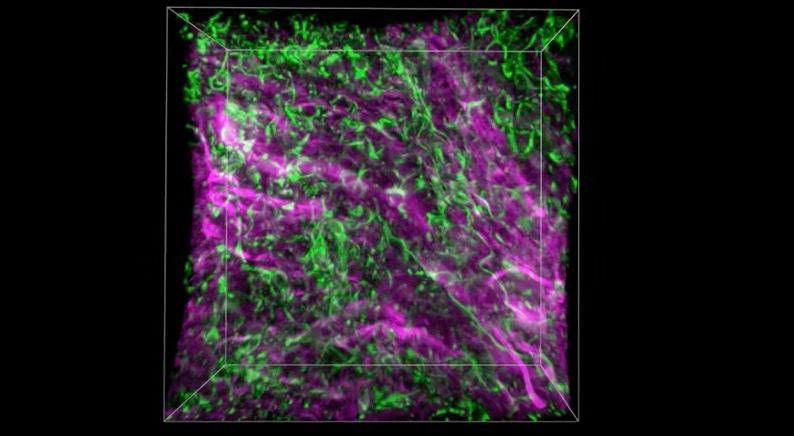ECM modifications in inflammatory skin diseases

Nach der Aktivierung werden Daten an YouTube übermittelt. Weitere Infos hier: Datenschutzerklärung
The human skin serves as the outermost physical barrier of the body, constantly interacting with the environment. The skin must withstand physical impacts while also controlling immune cell infiltration, which can both induce forces on the tissue. The extracellular matrix (ECM) plays a vital role in supporting the skin, helping to construct a strong barrier that resists mechanical forces, and providing a framework for cell adhesion and migration. The ECM is composed of a complex network of fibers and associated glycoproteins that vary between different tissues in the human body. In the case of human skin, the ECM consists of two distinct parts: the interstitial matrix that fills the space between cells in the dermis, and the basement membrane, a sheet-like matrix separating the dermis from the epidermis. Tissue-resident cells release numerous cytokines and proteases, which are stored in the ECM and can influence its structural composition by affecting matrix turnover and fiber deposition. In response to oxidative and mechanical stress during inflammation, specific skin cells secrete enzymes that can modify matrix molecules after translation.
These modifications alter the architecture and mechanical properties of the ECM, enabling the matrix to transmit mechanical forces back to cells. This communication influences cell behavior, phenotype, and function in response to changes in the microenvironment. In this project Dr. Pfisterer and her team investigate the role of ECM modifications in the chronic inflammatory skin disease psoriasis with the aim to identify novel pathways that may be involved in disease initiation.
People involved in the project: Karin Pfisterer (Principal Investigator), Parvaneh Balsini, Pauline Weinzettl, David Samardžić
